The Temple of Antas is an ancient archaeological site located in Sardinia, Italy, and dates back to the 6th century BC. Built by the Carthaginians, this structure honors the Sardinian-Punic god Sid Addir, also known as Sardus Pater. Over time, the Romans reconstructed and expanded the temple, providing it with the form that is primarily visible today.
Get your dose of History via Email
Historical Significance
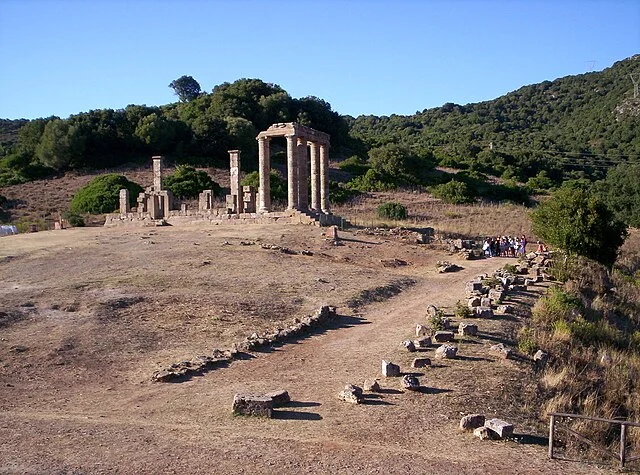
The Temple of Antas is one of Sardinia’s most important archaeological sites due to its unique blend of Punic and Roman religious traditions. Originally constructed by the Carthaginians, it reflects Sardinia’s connections with Punic culture during the period of Carthaginian influence on the island. When Rome conquered Sardinia in 238 BC, they repurposed the site to emphasize their rule. The temple’s Roman reconstruction in the 1st century AD under Emperor Augustus highlights Rome’s tendency to integrate conquered peoples’ religious practices into their own culture.
Architecture and Design
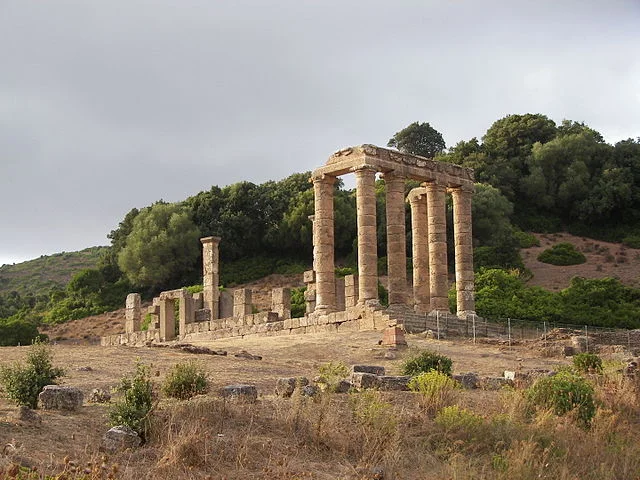
The temple follows a traditional Roman architectural layout, featuring a podium and a front-facing colonnade, though it incorporates Punic elements in its design. The temple’s cella, or inner chamber, housed statues and sacred objects, most notably a statue of Sardus Pater. The building stands on a rectangular platform with four large columns in its façade, constructed from local limestone. These elements demonstrate Roman architectural skill while preserving elements of Punic religious architecture.
A unique feature of the Temple of Antas is its blend of architectural styles. The columns, standing over 8 meters tall, are distinctly Roman but based on earlier Carthaginian stonework. The temple structure itself was designed to align with local topography, providing a visual connection to the surrounding landscape, which was considered sacred. This integration of Roman design with local religious practices reflects how Rome adapted to and respected local traditions in Sardinia.
Archaeological Excavations
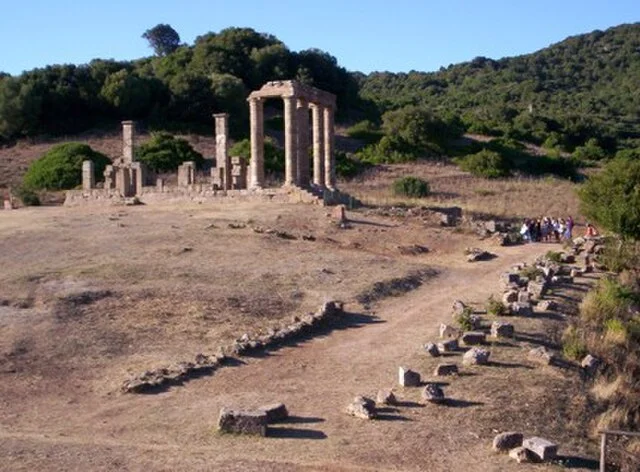
The Temple of Antas has been the focus of multiple archaeological excavations, particularly during the 19th and 20th centuries. Initial excavations uncovered various artifacts and inscriptions, confirming the temple’s function as a religious center devoted to Sardus Pater. Further studies and excavations in the 1960s, led by archaeologist Giovanni Lilliu, provided more detailed information about the temple’s layout and history. Lilliu’s excavations also revealed the extent of Roman modifications, allowing researchers to reconstruct the temple as it appeared in the Roman era.
The site has yielded a variety of relics, including inscriptions in Latin and Punic, ceramic artifacts, and fragments of statues. These findings have helped archaeologists understand the temple’s significance as both a Punic and Roman sanctuary. By studying the inscriptions, historians have been able to trace the temple’s use and evolution over time, confirming its continuous significance in Sardinian religious life.
Religion and Cultural Influence
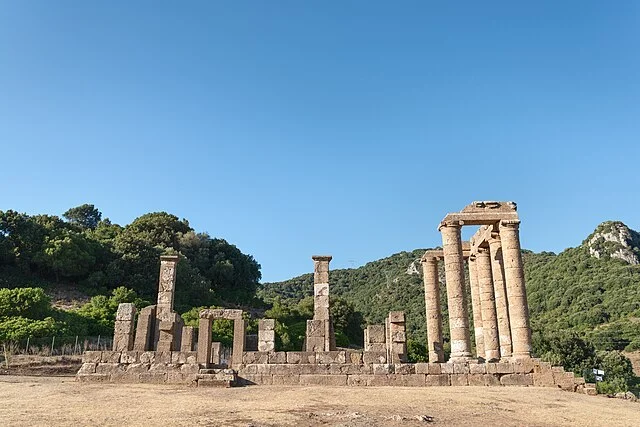
The Temple of Antas served as a focal point for the worship of Sardus Pater, a deity closely associated with the Carthaginian god Sid Addir. This deity symbolized strength and protection, and his worship was likely linked to local beliefs in ancestral guardianship. With the Roman conquest, the figure of Sardus Pater was absorbed into the Roman pantheon as an interpretatio Romana, demonstrating Rome’s policy of religious integration.
Worship ceremonies likely included offerings and rituals aimed at seeking the deity’s favor, especially for protection and prosperity. Roman influence may have introduced additional rituals, aligning the worship practices of Sardus Pater with those of similar Roman gods. Thus, the temple was not only a place of worship but also a symbol of cultural synthesis between Carthaginian and Roman beliefs.
Conservation and Tourism
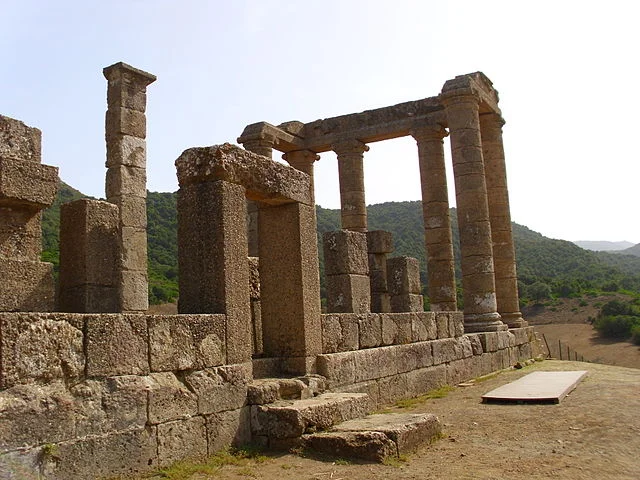
Today, the Temple of Antas remains a significant historical and cultural site in Sardinia. Conservation efforts have focused on preserving the temple’s structure and the surrounding archaeological remains. Visitors to the site can view the reconstructed columns and podium, which offer insight into Roman temple architecture and its Punic origins. Informational displays and guided tours provide context on the temple’s history, architecture, and religious significance.
Conservation efforts continue to ensure the temple’s stability, allowing future generations to appreciate its architectural and historical value. This ongoing preservation contributes to the understanding of Sardinia’s complex cultural history and the island’s interactions with powerful ancient civilizations like Carthage and Rome.
Source:

